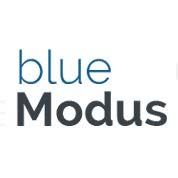
SEO, ROI, CPM - these are ingredients in the alphabet soup that we marketers cook up every day, either for paying customers or for our consumption. As you might know, I am a proponent for adding ADA to this recipe as well, because once you add it in, it makes everything better, from soup to nuts. Okay, I think I have taken this analogy as far as I can. “ADA,” short for the 30-year-old “Americans with Disabilities Act” has become a shorthand for “web accessibility” among American marketers, and most countries have an equivalent stand-in.
I’ve said this before, and am sure you will hear me say it again: if you are limiting your accessibility strategies to sliding under the compliance bar - limbo-style - you are missing the whole optimization ball game. Why? Because of the many ways that ADA compliance dovetails perfectly with SEO best practices and strategies. At this point, if you are optimizing for accessibility you can likely ignore SEO best practices altogether. At least in the ways to which we have become accustomed.
How does this make sense?
All the tools we use to gather the data we depend on - bots & spiders that crawl the web all day and all night, all over the world - are just screen readers. What is a search engine crawler if not a browser that can read but not see? Here are a few items that cross-over between accessibility and SEO:
- Using highly descriptive alt text. To the marketing pro, it is second nature, since bots and spiders need something to help them identify a collection of pixels that are otherwise without context. To a visitor with sight impairment, this gives the content much more semantic flavor. The more descriptive and representative the alternative text is, the better for both.
- Ordered, semantic headings. Clear hierarchy allows for clear navigation, helping both the visually impaired reader and the search engine robot map out the content and find their way through, which is the point, isn’t it? According to WebAIM’s latest survey, navigating by heading is the #1 navigation strategy used by most screen reader users.
- Link purpose. “Read More,” “Click Here,” and “More Info” just do not have any meaning if you cannot see what is around them. Using more descriptive language (even if it is only ‘visible’ to search engines and screen readers) provides a clearer path through your content and more explicit context. If they know what to expect at a link, they might just follow it a little more excitedly.
It seems almost sinister how search engines take all our work and grade it via secret, living algorithms which we, in turn, try to trick and divine through “search engine optimization” in some never-ending arms race of relevance. But that is the wrong way to look at it.
The thing to remember is that all these metrics and checklists are stand-ins for something that machines cannot quantify, and that is quality and care. All they have are the signals that we put out there, and when you boil all the hot air out of the soup what you are left with is making something good, and useful. If you show that you care about your users and your content, care about their experience and access to it, the speed and ease with which they can consume it, then you are making the best web, and that is what search engines are looking for, even if they do not know it yet. There are engineers right now trying to quantify the quality that is already out there, and guess what? The strongest technical signal that you can send that you are worthy of traffic and care about your users is to make it easier for your most limited users: the robot and the screen reader.
In this light, accessibility improvements are SEO improvements. It also means that, as a marketer, you can measure accessibility efforts with the same mechanism you use to calculate the ROI of SEO efforts. My challenge to you would be to experiment with an accessibility change within your SEO regime and see what happens. I truly believe that when marketers see accessibility efforts making money rather than costing it, we will be looking at a whole new internet.
If this has not been on your radar, do not feel too bad. If you are involved in SEO it turns out that you’re an unwitting almost-expert on a lot of accessibility topics. Every time you were focused on findability metrics you were doing constructive accessibility optimization. All the work you did nudging the bar graph a little higher likely improved your accessibility scores too. And if you were worried because you did not know what to do next, or how you were going to keep climbing the rankings, now you have a whole new list of opportunities to optimize.










